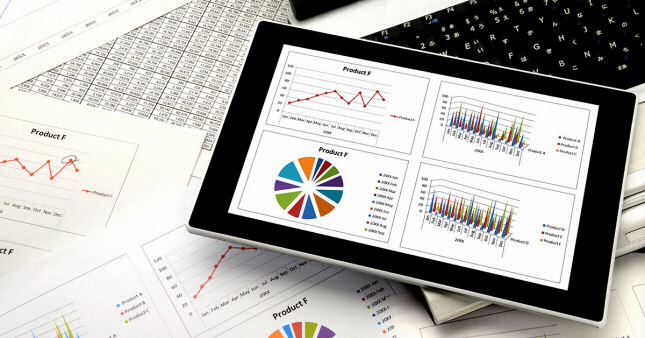How to create an investment portfolio to meet your goals

What is an investment portfolio?
In finance, an investment portfolio is a term that refers to a collection of your assets. A portfolio may include securities including stocks, bonds, mutual funds, money market funds, and exchange-traded funds. Assets are things that you invest money in with the hope that they will increase in value in the future.
What is portfolio management?
Another common term that is used in finance is portfolio management. It refers to the decision-making process for diversifying your investments and matching your investments to your objectives. Managing a portfolio also includes decisions about asset allocation and balancing risk.
Portfolio management involves determining the relative strengths and weaknesses of choosing debt vs. equity as well as strategies for growth vs. risk. The goal of portfolio management is to maximize your returns at your ability to tolerate risk.
Statistics on portfolios
In the U.S., 60 percent of households own investment securities through IRAs, 401(k)s, or taxable accounts. When you only consider taxable investment accounts, the percentage drops to 33 percent. Another 29 percent only own assets held in retirement accounts, and 38 percent hold no investments at all.
Building an investment portfolio over time, will work towards financial independence for your retirement years. Your calculated retirement lifestyle requires that your money will last. It is important to financially plan for these retirements accounts and learn what an investment portfolio is.
Types of asset classes
The assets that are contained in your investment portfolio fall into a number of different asset classes. A key component of good portfolio management is to manage the allocations across the different asset classes that you own. The major asset classes include the following:
- Equities
- Bonds
- Cash equivalents
- Real estate and commodities
The individual asset classes that are contained in an investment portfolio might contain a variety of different investment securities.
Equities are stocks and include stocks from individual companies or stocks in funds like exchange-traded funds or index funds, including small cap index funds and S&P 500 index funds. The stocks might include large-cap stocks, mid-cap stocks, small-cap stocks, and international stocks. The different types of stocks can be further divided into growth and value stocks. Here is a brief look at value vs. growth stocks.

Growth stocks are shares in companies that are anticipated to grow at rates that are significantly higher than the market average. Growth stocks generally do not pay dividends. Instead, investors earn money through capital gains when they eventually sell their shares. Investments in growth stocks are typically not recommended for investing for beginners because they can be risky.
Value stocks are stocks that tend to trade at a price that is lower as compared to its fundamentals, including the dividends, sales, and earnings. This makes them attractive to people who are learning how to build an investment portfolio. When you compare value vs. growth stocks, value stocks may carry less investment risk as compared to growth stocks.
Bonds make up another asset class. These include the following types of bonds:
- Treasury bonds, including Treasury Inflation Protected Securities (TIPS)
- Investment-grade corporate bonds
- High-yield corporate bonds
- Short-term bonds
- Intermediate-term bonds
- Tax-exempt municipal bonds
- Foreign bonds
A diversified investment portfolio that contains several types of bonds may provide a decent return on investment with less volatility.
Cash equivalents are different types of accounts that allow you to deposit and to withdraw money. Assets that fall into this class include Money Market Accounts (MMA), Certificates of Deposit (CD), and Treasury notes.
The final major asset class that you might have in your personal financial portfolio is the real estate and commodities asset class. This category includes real estate investments like rental properties, natural resource commodities, and precious metals including gold, silver, palladium, or platinum.
Asset Allocation
A key tenet of good portfolio management is asset allocation. Asset allocation is an investment strategy through which you attempt to balance the investment risk and reward by dividing the assets in your personal financial portfolio by percentages that reflect your financial goals, risk tolerance, and the time that you have to invest.
There are different levels of investment portfolio risk. An aggressive portfolio is one that has a proposition of high risk and high reward. Stocks in portfolios with these types of asset allocation models generally have a high beta, which is a high sensitivity to the overall market. Stocks with higher betas consistently experience fluctuations that are larger as compared to the overall market.

A portfolio that has a moderate risk is one that is built for people who have a medium risk tolerance and a time frame for investment that is longer than five years. A conservative portfolio is one that has a short time horizon and a low ability to tolerate risks.
A conservative portfolio may contain defensive stocks. Defensive stocks normally do not have high beta values and are fairly isolated from broad market movements. By contrast, cyclical stocks are those that are the most sensitive to the underlying economic business cycle. There are some advantages to purchasing cyclical stocks for a conservative investment portfolio. The benefit of buying cyclical stocks vs. defensive stocks is that they offer an added level of protection against adverse events.
The goals of the investor are also important in choosing asset allocation models. If you are an active investor, your focus might be on gaining short-term profits through continuous buying and selling. The benefit of this approach is its risk management capabilities because it allows you to adjust your investment portfolio to align with the prevailing market conditions. It has short-term benefits when investors take advantages of short-term trading opportunities. Active investors tend to pay per trade which can result many fees. In traditional brokerages, these fees add up quickly and result in overall high fees, which will cut into your profits. Online platforms have opened up investing with lower fees on trading stocks, which allow more of the wealth to grow over time.
Investment portfolio models for passive investors are different. These types of portfolios are called lazy portfolios because the goal is to build wealth slowly over time by minimizing your buying and selling. Lazy portfolios are built with buy and hold investments and set it and forget it investing. With these investment portfolio models, people select their securities with a long-range view and check in on a quarterly or annual basis to maintain balanced portfolios. Otherwise, the investors truly do set it and forget it. Traditional brokerages charging management fees and commissions also can take away from investment growth. Investors may not see the daily fees as high, but the overall fees can add to high costs over time. Low or no fees to invest can be found online. Passive investors can find platforms where hidden fees will no longer eat into retirement savings.
Investment portfolio models also are impacted by your time horizon. If your objectives are less than a year away, cash and MMAs are the most appropriate for these short-term goals. For long-term goals, stocks are recommended for holding periods of five years or more. Bonds are investments that fall somewhere in the middle.
Two other investment portfolio models are strategic and tactical. The strategic investing model is based on Modern Portfolio Theory and occurs when the investors try to take a minimum level of market risk in order to capture maximum-level returns for a given investment portfolio. To use this approach, determine how much of your money you should invest in different categories of investments. Once you have decided on an asset allocation, you then stay with it for years.
The tactical approach to investing is a style in which the three primary asset classes, including stocks, bonds, and cash, are actively adjusted and balanced. The strategy with this approach is to maximize your portfolio return on investments while keeping your market risk to a minimum and involves moving funds around frequently.

Investments
Your overall investment portfolio may include investments in your 401(k) or another employer-sponsored plan. It may also include investments in individual retirement accounts as well as investments that are contained in a self-directed, taxable brokerage account. It also includes cash.
If you work for a company that offers a 401(k) or another type of employer-sponsored plan, it makes sense for you to try to contribute the maximum allowed amount. The investment choices that you might have in a 401(k) plan may be more limited. However, 401(k) plans have higher annual contribution limits and are tax-advantaged, which should allow your contributions to grow on a tax-deferred basis over time.
In addition to your employer-sponsored retirement plan, you are also able to open individual retirement accounts and choose different assets to hold in them. These types of accounts might include traditional IRAs and Roth IRAs. Traditional IRAs may allow you to take deductions during the years in which you make contributions while Roth IRAs allow you to take post-retirement withdrawals tax-free.
You are able to invest in a broader range of assets in your traditional or Roth IRA, and you can open these types of accounts in addition to your employer-sponsored plan. However, the aggregate amount that you can contribute to Roth and Individual IRAs each year is $6,000 if you are younger than age 50 and $7,000 if you are 70 or older.
In addition to employer-sponsored plans and IRAs, investors are also able to invest in securities held in their self-directed, taxable brokerage accounts. Investments in these types of accounts do not grow on a tax-deferred basis and may be subject to capital gains and losses. However, they can offer you the ability to invest in more types of assets that might not be available to you through your retirement accounts.
Your overall investment portfolio may also include cash. This includes money that you have deposited in savings accounts or money market accounts. It also includes any money that you have invested in certificates of deposit.
How to create an investment portfolio
There are a few steps to creating an investment portfolio. Start by opening an investment account and roll over any old accounts into it. Connect your savings or checking account to the investment account so that you can automatically fund your investments.
To determine how to create your personal investment portfolio, you need to think about the following:
- Risk tolerance
- Performance expectations
- Cash-flow requirements
- Goals for wealth building
- Tax status
Your individual risk tolerance is the degree of variability and fluctuation you can withstand with your investments. The higher your risk tolerance is, the more aggressively you can invest in your portfolio for a higher expected rate of return. When you think about asset allocation by age, you can generally be more aggressive when you are younger and more conservative as you near your retirement age.
Your performance expectations are the expectations that you have for your investments and the objectives that you are trying to accomplish. You also need to take into account the cash-flow requirements, which are the amount of money that you will need to fund your investments. Your goals for wealth building are also important.
When you conduct an asset allocation by age and engage in portfolio management, consider the amount of money that you want to have available to you in retirement or to preserve your legacy. Finally, take into account your current and projected income tax brackets as well as your taxable, tax-deferred, and tax-exempt accounts.
Make certain that you pay attention to the management and commission fees and work to minimize them. When you pay fees, the money that you pay for portfolio management means that your money might not grow as much as it otherwise would.
Look at the expense ratio. An expense ratio is an annual fee that is expressed as a percentage of your investment. Certain types of investments including mutual funds, small cap index funds, S&P 500 index funds, and exchange-traded funds have these fees built in. These types of fees can drag down your portfolio returns significantly.
To create and maintain a balanced portfolio, you will need to diversify your investments according to your objectives and goals. You should review your investments and rebalance your portfolio as necessary.
M1 Finance helps you keep your portfolio investment on track
M1 Finance is a robust investment platform and mobile app that simplifies investing for people of all levels. M1 blends key investing principles with powerful digital technology to simplify the investing process, so you can build wealth effortlessly.
M1 allows you to create a custom portfolio by selecting from a broad variety of different types of investments across different asset classes. If you prefer, you can simply choose from among more than 80 expert-created portfolios that have been designed to meet the needs of investors with different risk tolerances, timeframes, and financial goals.
You can set up automatic investing so that money flows into your account and in the percentages that you have selected automatically according to your chosen investment schedule. M1 Finance allows you to benefit from dynamic rebalancing so that your portfolio remains balanced, and you can benefit from automatic reinvestment of your dividends. One of the key benefits of M1 finance is that you will not be charged any commissions or fees. M1 Finance also offers the tools that you need to make managing your investment portfolio more personal, less expensive, and more convenient.
